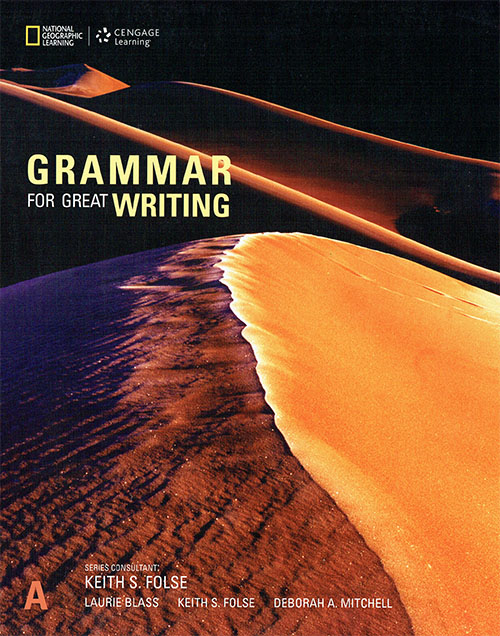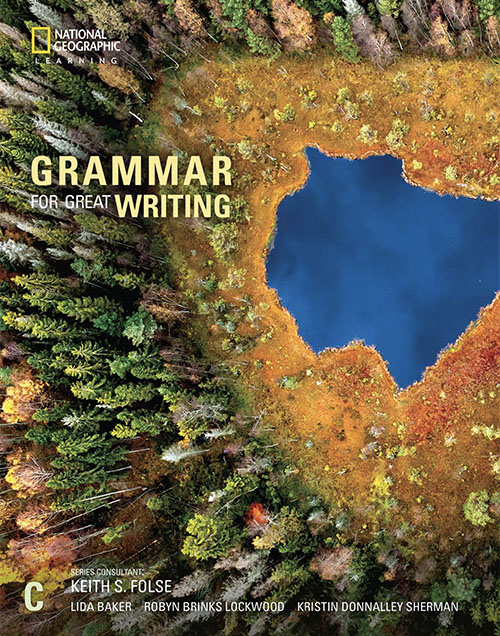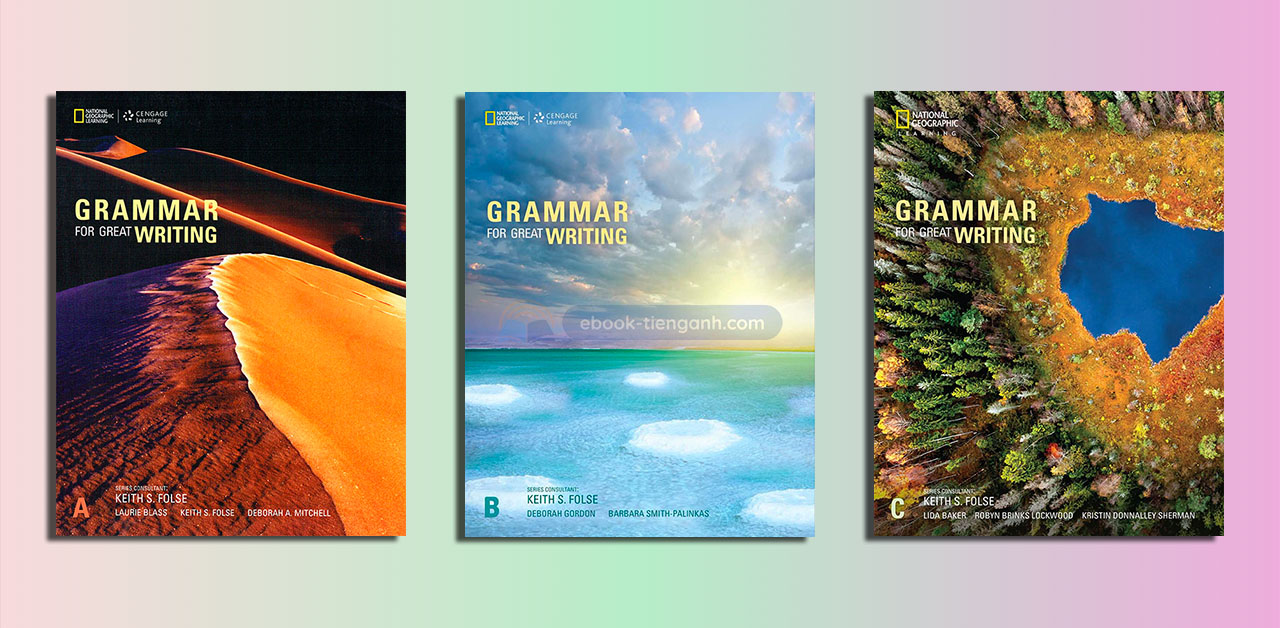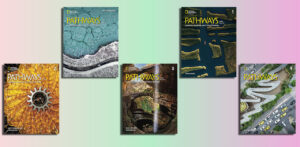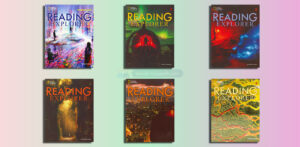Download, National Geographic
Download NGL Grammar for Great Writing Pdf (A2 / B2)
Grammar for Great Writing
Level A
Grammar for Great Writing A Answer Key.pdf
Grammar for Great Writing A.pdf – Sample: Click
Level B
Grammar for Great Writing B Answer Key.pdf
Grammar for Great Writing B.pdf – Sample: Click
Level C
Grammar for Great Writing C Answer Key.pdf
Grammar for Great Writing C.pdf – Sample: Click
| Image | Name | Price | Buy |
|---|---|---|---|
| Grammar for Great Writing - A | $5 | ||
| Grammar for Great Writing - B | $5 | ||
| Grammar for Great Writing - C | $5 | ||
| Grammar for Great Writing - All 3 Levels | $12 |
✅ Get Grammar for Great Writing (all files): $5 / level; $12 / all 3 levels
๏ Other payment methods: Click here
Overview of the “Grammar for Great Writing”
Contents
- 1 Overview of the “Grammar for Great Writing”
- 2 Who is suitable for ‘Grammar for Great Writing’?
- 3 The benefits of ‘Grammar for Great Writing’
- 4 Effective teaching and learning strategies for ‘Grammar for Great Writing’
- 5 Comprehensive Grammar and Writing Improvement Series: Enhancing English Skills for Academic and Professional Success
| ✅ Coursebook: | Grammar for Great Writing |
| ✅ Authors: | Laurie Blass, Deborah A. Mitchell, Keith Folse, Deborah Gordon, Barbara Smith-Palinkas, Lida Baker, Kristin Donnalley Sherman, Robyn Brinks Lockwood |
| ✅ Publisher: | National Geographic Learning |
| ✅ Levels: | A2, B1, B2 (Low-intermediate (US), Intermediate, High-intermediate) |
| ✅ Skill: | Writing, Grammar |
| ✅ English type: | American English |
| ✅ Publication year: | 2020 |
“Grammar for Great Writing” by National Geographic Learning is an instructional series designed to enhance the grammatical and lexical skills of students, particularly in the context of academic writing. The series is structured into three levels, catering to different stages of language proficiency in American English. Here’s an overview of each level:
Grammar for Great Writing A:
- Level: Low-intermediate (US)
- Authors: Laurie Blass, Deborah A. Mitchell, Keith Folse
Grammar for Great Writing B:
- Level: Intermediate
- Authors: Deborah Gordon, Barbara Smith-Palinkas
Grammar for Great Writing C:
- Level: High-intermediate
- Authors: Lida Baker, Kristin Donnalley Sherman, Robyn Brinks Lockwood
Key Features and Focus Areas
- Emphasis on Common Errors: The series concentrates on the most frequent errors found in student writing, providing an effective approach to improving grammar for academic purposes.
- Corpus-Informed Vocabulary: It incorporates vocabulary that is often associated with the target grammar, aiming to enhance the fluency of student writing.
- Editing Activities: A variety of editing exercises are included to refine students’ writing skills and improve accuracy.
- Writing Samples: The books offer writing samples in various rhetorical modes, offering relevant practice for learners at different levels.
Ideal Use
This series is versatile and can be used as a standalone resource for improving writing and grammar skills or as a complement to other academic writing series, including the “Great Writing” series by the same publisher. It’s specifically designed for classroom use in a writing and grammar class, targeting learners at different stages of English language proficiency.
The structure of the series, with its focus on practical skills and real-world applications, makes it a valuable resource for students looking to enhance their academic writing abilities. The inclusion of common errors and editing activities also ensures that learners not only understand grammatical rules but also learn to apply them effectively in their writing.
Grammar for Great Writing A
Who is suitable for ‘Grammar for Great Writing’?
“Grammar for Great Writing” by National Geographic Learning is suitable for a range of learners, especially those involved in academic writing or looking to improve their writing skills in American English. Here’s a breakdown of its suitability:
English Language Learners at Different Proficiency Levels:
- Low-intermediate (US): Book A is tailored for learners who have a basic understanding of English but need to solidify their grammar for more complex writing tasks.
- Intermediate: Book B caters to students who have a fair grasp of English and are looking to refine their grammar for more effective writing.
- High-intermediate: Book C is designed for students who are relatively proficient in English and need to polish their skills for advanced writing tasks, like academic essays or research papers.
Students in Academic Settings:
- The series is ideal for high school, college, or university students who are involved in academic writing. It provides them with the tools to write more effectively and accurately in an academic context.
Writers Looking to Improve Grammar and Writing Skills:
- Even outside of academic settings, individuals looking to enhance their grammar and writing skills in American English can benefit from this series.
ESL/EFL Teachers and Educators:
- The series can be a valuable resource for teachers who are looking for structured material to help their students improve their writing skills.
Learners Preparing for Standardized Tests:
- Those preparing for tests that include writing components, like TOEFL or IELTS, may find this series useful for practicing and improving their written English.
Overall, “Grammar for Great Writing” is a comprehensive resource for anyone looking to enhance their academic writing proficiency in English, particularly those who aim to overcome common grammatical errors and develop a more sophisticated and fluent writing style.
Grammar for Great Writing B
The benefits of ‘Grammar for Great Writing’
“Grammar for Great Writing” offers several benefits to its users, particularly those seeking to enhance their academic writing skills in American English. Here are some key advantages of using this series:
- Focused Approach to Common Errors: The series specifically targets the most common errors found in student writing. This focus allows learners to quickly improve their writing by addressing the issues that are most likely to impact the clarity and correctness of their work.
- Corpus-Informed Vocabulary Learning: The inclusion of vocabulary that is frequently associated with the target grammar points ensures that learners are not only learning grammar in isolation but are also expanding their vocabulary in a context that reinforces their grammatical understanding. This approach helps in creating more fluent and natural-sounding writing.
- Practical Editing Activities: The series includes a wide range of editing exercises. These activities are designed to help students actively engage with the material, apply what they’ve learned, and develop their skills in revising and improving their own writing. This hands-on practice is crucial for internalizing grammar rules and understanding their application in real-world writing.
- Variety of Writing Samples: Providing writing samples in various rhetorical modes helps learners understand how grammar functions in different types of writing, from narrative to expository to persuasive. This exposure is beneficial for students to adapt their writing style to different contexts and purposes.
- Structured Learning for Different Levels: With three distinct levels (low-intermediate, intermediate, and high-intermediate), the series offers a structured learning path. This allows students to progress at their own pace and ensures that the material remains challenging and appropriate to their skill level.
- Enhances Academic Writing Skills: The series is particularly geared towards improving academic writing. This is beneficial for students in high school, college, or university settings, as well as for those preparing for standardized tests or engaging in professional writing.
- Supports ESL/EFL Learning: For learners of English as a Second or Foreign Language, the series provides a clear, structured approach to understanding and applying grammar rules in the context of writing, which is often a challenging area for ESL/EFL students.
- Comprehensive Coverage of Key Grammar Points: The series covers a wide range of grammatical topics, ensuring a comprehensive understanding of English grammar as it pertains to effective writing.
Overall, “Grammar for Great Writing” is an effective tool for anyone looking to strengthen their grasp of English grammar and improve their writing skills, particularly in an academic context. Its targeted approach, practical exercises, and structured progression make it a valuable resource for a wide range of learners.
Grammar for Great Writing C
Effective teaching and learning strategies for ‘Grammar for Great Writing’
Effective teaching and learning strategies can greatly enhance the effectiveness of “Grammar for Great Writing.” Here are some strategies tailored for both teachers and learners to maximize the benefits of this series:
For Teachers:
- Contextualized Grammar Instruction: Integrate grammar lessons with writing tasks. Instead of teaching grammar in isolation, use examples from the students’ writing or the writing samples in the book to illustrate how grammar functions in context.
- Peer Review Sessions: Organize peer review workshops where students can give and receive feedback on their writing. This encourages collaborative learning and helps students understand common errors and strengths in writing.
- Incorporate Technology: Utilize digital tools for interactive grammar exercises and quizzes. This can make learning more engaging and provide instant feedback to students.
- Differentiated Instruction: Recognize the varied skill levels in your classroom. Provide additional support or advanced materials depending on each student’s proficiency level.
- Regular Writing Assignments: Assign regular writing tasks that correspond with the grammatical concepts being taught. Encourage students to apply new grammar rules in these assignments.
- Focus on Editing Skills: Teach students how to edit their own work effectively. This not only improves their current writing but also builds essential skills for future writing tasks.
For Learners:
- Active Engagement with Materials: Don’t just passively read the grammar rules; try to apply them in your writing. Practice exercises in the book and create your own sentences using the new grammar structures.
- Regular Practice: Consistency is key in learning grammar. Dedicate a regular time for grammar practice and writing.
- Peer Learning: Form study groups to discuss grammar rules and writing samples. Explaining concepts to others can deepen your own understanding.
- Use Writing as a Tool for Learning: Regularly write essays, paragraphs, or journals. Use these writing exercises as opportunities to apply new grammar rules.
- Seek Feedback: Regularly ask for feedback from teachers or peers on your writing. Understanding your common errors and areas for improvement is crucial.
- Utilize Additional Resources: Supplement your learning with online resources, grammar blogs, or additional exercises, especially in areas where you feel you need more practice.
- Reflect on Your Progress: Keep track of your learning journey. Reflect on how your understanding and application of grammar in writing have improved over time.
By employing these strategies, both teachers and learners can make the most out of “Grammar for Great Writing,” turning it into a practical and effective tool for enhancing writing skills.
Comprehensive Grammar and Writing Improvement Series: Enhancing English Skills for Academic and Professional Success
For learners seeking alternatives to the “Grammar for Great Writing” series by National Geographic Learning, which focuses on enhancing English grammar skills within the context of writing, there are several educational series that offer a similar comprehensive approach to grammar and writing instruction. Here are some notable series that provide thorough grammar explanations, practical exercises, and writing support:
- “Grammar in Use” Series by Cambridge University Press: Including “English Grammar in Use” (Intermediate), “Basic Grammar in Use” (Beginner/Elementary), and “Advanced Grammar in Use,” this series offers clear explanations, practice exercises, and is suitable for self-study or classroom use.
- “Azar-Hagen Grammar Series” by Pearson Education: A comprehensive series that includes “Understanding and Using English Grammar” and “Basic English Grammar.” It provides in-depth grammar instruction complemented by a wealth of exercises and writing activities.
- “Focus on Grammar” by Pearson Education: An integrated skills approach that blends grammar instruction with practice in listening, speaking, reading, and writing, suitable for learners who wish to improve both their grammar and writing skills.
- “Grammar for Writing” by Sadlier: Specifically designed to improve writing skills by reinforcing grammar concepts, this series offers a step-by-step approach to writing that integrates grammar instruction directly with writing activities.
- “Oxford English Grammar Course” by Oxford University Press: This series, available in Basic, Intermediate, and Advanced levels, provides detailed explanations, examples, and exercises, focusing on improving grammar with the goal of enhancing writing skills.
- “The Good Grammar Book” and “How English Works” by Michael Swan and Catherine Walter (Oxford University Press): Both books offer clear grammar explanations and practice, designed to improve overall English usage with specific attention to how grammar improves writing.
- “Write Right!” by Jan Venolia: While not a traditional grammar series, this guide offers practical advice on improving writing skills, covering grammar, punctuation, and style, suitable for learners looking to refine their writing.
- “Grammar and Beyond” by Cambridge University Press: This series emphasizes the link between grammar and writing, presenting grammar in context with practice exercises that extend into writing activities, aimed at academic learners.
- “Understanding Grammar” by Macmillan Education: This series focuses on clarifying complex grammar points, offering practical exercises that apply these points within writing contexts, making it ideal for learners aiming to improve both their understanding of grammar and their ability to write effectively.
- “Collins English for Life: Writing” by Collins: Specifically designed for adults, this book provides practical advice, exercises, and tips to improve writing skills for emails, reports, and social communication, alongside solid grammar foundations.
- “Longman Academic Writing Series” by Pearson Education: A comprehensive series that takes learners from sentence structure and paragraph writing to essays and research papers, integrating grammar instruction throughout to support writing development at each stage.
- “Grammar Express” by Pearson Education: With a focus on self-study, this series presents grammar topics with clear explanations and follows up with extensive practice activities, including writing exercises that encourage the application of grammar in writing.
- “Writing Skills” by Diana Hanbury King: Focused more on the mechanics of writing and composition, this series provides a structured approach to developing writing skills, from basic sentence construction to complex essays, incorporating grammar review as part of the writing process.
- “Effective Academic Writing” by Oxford University Press: Offers a step-by-step approach to academic writing, starting from paragraph structuring to full essays, with integrated grammar practice to ensure clarity and coherence in writing.
- “English Grammar & Writing Skills” by Saddleback Educational Publishing: Targeted at struggling learners, this series breaks down complex grammar and writing concepts into manageable lessons, offering clear explanations and plenty of practice opportunities.
- “Developing Composition Skills: Academic Writing and Grammar” by Cengage Learning: Combines detailed grammar instruction with academic writing practice, guiding learners through the process of developing coherent and well-structured essays with a strong grammatical foundation.
These alternatives offer robust grammar instruction with a focus on enhancing writing skills, providing learners with the tools they need to improve their English proficiency in both spoken and written forms. Whether for academic purposes, professional development, or personal improvement, these series cater to a wide range of learning needs and goals.


